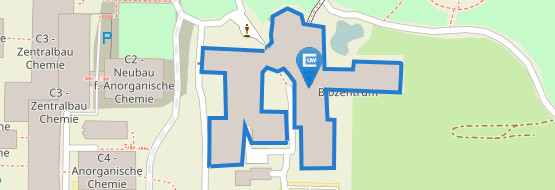No mid-day nap for Finnish flies
03/09/2017Fruit flies from warm regions have a siesta, whereas their Nordic counterparts do not. Biologists from the University of Würzburg reset the circadian clock of African flies in an experiment. As a result, these insect also reduced the length of their siesta.

There are more than 2,000 species of fruit flies around the world. Some prefer warmer climates, whereas others are home in northerly latitudes. "We wanted to find out whether the circadian clock of the northern species differs from that of their southern relatives," explains Professor Charlotte Helfrich-Förster from the University of Würzburg's Biocenter. "For this purpose, we compared two fruit fly species from Finland with one from Tanzania."
Long siesta at the equator
In the laboratory, the scientists varied the length of light and dark cycles to which the insects were exposed. In their first experiment, twelve hours of day were followed by twelve hours of night. This rhythm is typical for the equator where day and night are about equally long throughout the year. The African flies exhibited a characteristic pattern of activity under these conditions: Their active phases were limited to the time around dusk and dawn; in the meantime they rested. In nature, such behaviour is highly advantageous as it allows the insects to better cope with the heat of the day.
Being slightly more relaxed in the morning, the Finnish dipterans in contrast had their activity peak in the early afternoon and stayed active until nightfall, mostly without taking a siesta. From a biological point of view, this behaviour makes sense, because even at the height of summer, the northern Scandinavian sun is rarely strong enough to harm the animals.
In the next step, the scientists extended the lab day: They left the lights on for 20 hours before turning them off again for four hours. In response to this, the Tanzanian flies did not extend their resting period, but rather started to bustle about long before dusk. Their activity now peaked at a time of day when it would normally still be scorching hot. If there were 20-hour days in Tanzania, such behaviour would probably be very risky.
Tiny differences in the flies' brains
So the Circadian clock of the southern flies seems to be geared to more or less constant day lengths. The interval between morning and evening activity always has about the same length. The Finnish specimens on the contrary adapted their activity pattern to the longer days: They used the extended period of light for more extensive foraging which was ended only by the onset of darkness. "So the circadian clocks of the two species seem to respond very differently to the modified day-and-night rhythms, Charlotte Helfrich-Förster points out."We asked ourselves why this is the case."
On the surface of it, the circadian clocks of all three species seem to be structured identically: Both the Finnish fruit flies and their Tanzanian counterparts have the same clock neurons – these are the nerve cells in the brain that make up the circadian system. Therefore, the Würzburg scientists took a closer look at the flies' brains. "We were able to show that the Finnish species produce no blue light photoreceptor in specific neurons, very unlike their African relatives," says Helfrich-Förster. "This means that the affected nerve cells do not have a sensor for day and night." Other neurons lack a molecule named PDF which usually passes on the incoming light-dark signals to other centres in the brain.
Resetting the fly clock
But are these differences really responsible for the altered activity pattern in the Scandinavian insects? To answer this question, the Würzburg scientists "reset" the circadian clock of the African Drosophila. Through genetic modification, they switched off the production of the blue light photoreceptor in those neurons in which it was missing in the Finnish flies, too. They proceeded similarly for the PDF. The result of the manipulation was striking: "The fruit flies from Tanzania now exhibited a rhythm of activity quite similar to that of their Finnish colleagues," Professor Helfrich-Förster emphasizes. "Also their siesta was less pronounced."
The ancestral fruit fly is believed to be of African origin. Over time, the insects also spread to cooler regions. The scientists assume that the flies' circadian clock also changed in the process, allowing the insects to adapt to the day length fluctuations and the lower intensity of the sun.
Pamela Menegazzi, Elena Dalla Benetta, Marta Beauchamp, Matthias Schlichting, Ingolf Steffan-Dewenter and Charlotte Helfrich-Förster: Adaptation of Circadian Neuronal Network to Photoperiod in High-Latitude European Drosophilids; Current Biology; DOI: 10.1016/j.cub.2017.01.036
Contact
Prof. Dr. Charlotte Helfrich-Förster, Department of Neurobiology and Genetics, T: +49 931 31-88823,
E-Mail: charlotte.foerster@biozentrum.uni-wuerzburg.de






